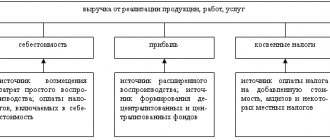Accounting in construction
The construction of buildings or structures has enormous differences from other types of activities, not only in the stages of implementation and implementation, but also in terms of accounting and tax accounting.
Differences in accounting in construction:
- Documentation. Participants use other documents to reflect the stages and results of construction. For example, certificates of completed work in the KS-2 special form, as well as a special certificate on the cost of construction in the KS-3 form.
- Cost accounting by elements. In other words, the costs incurred are divided into several elements, such as: materials, wages of specialists, operation of equipment, machinery and mechanisms, as well as overhead costs.
- Features of object acceptance. The completed construction project is subject to acceptance according to special rules and special commissions; based on the results of this control event, a transfer and acceptance certificate is drawn up (form No. OS-1a).
- The need to register the object. The constructed building is subject to mandatory registration with the relevant government agencies. Only after registration an object can be included in fixed assets.
Moreover, accounting in the customer’s company also differs from accounting in the contractor’s organization. Let's take a closer look at the accounting features for each party.
Accounting for materials for construction
The assignment of responsibilities for providing construction materials to the customer was very common during the period of the planned economy - when the supply of materials of a certain range was funded, and the fund holders were the construction customers: central, sectoral, departmental and territorial authorities.
With the transition to market relations, the provision of construction materials with materials has become significantly simpler. However, in a number of cases, the construction contract provides for the supply by the customer of a certain range of materials. This is due to the fact that specialized customers who have been working in this area for a long time have their own warehouses, transport, as well as qualified employees for the acquisition, storage and transfer of inventories to production. In these conditions, providing construction with materials supplied by the customer can significantly reduce the cost of producing construction products, will optimize the size of working capital, and also carry out effective control over the efficiency of use of materials.








